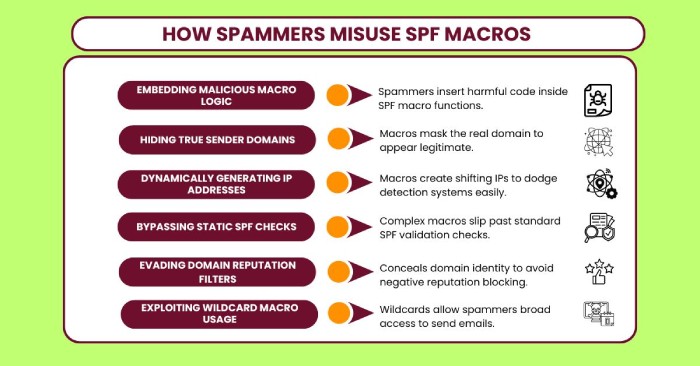SPF macros: Underused power or overlooked threat?
SPF macros can be best described as placeholders that are used within SPF records. They intend to make the SPF record more flexible and intelligent. This way, you don’t have to hardcode every detail; you can use macros like %{i}, %{d}, and %{h} to allow SPF records to adapt during a live email authentication check.
You can think of SPF macros as variables in a formula, so you don’t have to write numbers manually. All you have to do is create a template that you can use over and over again by replacing the variables with the sender’s information.
How do SPF macros improve SPF record management and email deliverability?
When used correctly, SPF macros can be very helpful, especially if multiple employees and vendors send emails from your domain. This is because they let you rotate IPs and delegate subdomains without having to create lengthy SPF records.
SPF macros also help your SPF record stay within the DNS lookup limit of 10. This is one of the biggest pain points for large organizations because their SPF record often goes invalid or trigger false negatives.
Risks of using SPF macros in your SPF record
While SPF macros offer flexibility and efficiency, they do come with a few risks that can hit your deliverability hard if you are not careful. It’s a bit complex and technical to understand the correct way to incorporate them, and can also make your SPF record harder to read, troubleshoot, or manage.
There’s also a security concern. Misused macros can unintentionally expose internal IP addresses or DNS details you didn’t mean to share. Some spammers have even used macros to avoid detection, which is why security tools often flag overly complex SPF records as suspicious.
Lastly, not all mail servers interpret SPF macros the same way. What works with one provider might fail with another, leading to inconsistent results and frustrating deliverability issues.
If you’re not confident in handling macros, it’s better to stick to a simpler SPF setup or get expert help to configure them safely.
The final verdict- Should you use SPF macros?
The bottom line is that SPF macros are powerful, but they are not for everyone. Here is what you should consider before you go ahead and use them-
- Use macros only if you need dynamic logic– For example, if you manage SPF for multiple domains or have different subdomains for finance, marketing, support, etc., and you wish to automate parts of the SPF record using variables like %{d} or %{i}.
- Keep your macros well-documented and simple– The reason this is important is that the complex your macros are, the harder it gets to audit or troubleshoot them if something is wrong.
- Test thoroughly before going live– Even small errors in macro syntax can break SPF checks or lead to mail rejection.
Avoid using SPF macros if you are unsure or don’t have an expert on board to do it for you. Instead, opt for a straightforward setup using ‘include’ statements and IPs. This keeps your record simpler to manage and less likely to run into technical issues.
However, if your situation requires you to use SPF macros and you are not confident on how to incorporate them, reach out to the experts of DuoCircle. Our team can handle everything for you.


